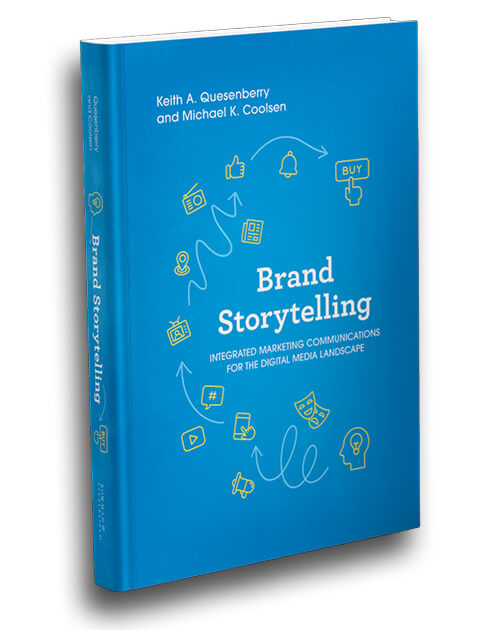In a new book, associate professor of marketing details why certain ads work

What do Super Bowl commercials have to do with Shakespeare? A lot more than you might think.
In the recent book “Brand Storytelling: Integrated Marketing Communications for the Digital Media Landscape,” Messiah’s Associate Professor of Marketing Keith Quesenberry discusses the research he conducted with co-author Michael Coolson, a professor of marketing at Shippensburg University. They conducted a research study of 155 viral YouTube videos.
Studying ads is nothing new to Quesenberry, who worked in advertising for 17 years. He says the success of ads used to be hit or miss. What, exactly, made an ad seep into the collective consciousness? Turns out, it was storytelling. Ancient storytelling.
“Our research is inspired by a dramatic storytelling framework begun in Aristotle’s ‘Poetics’ and refined by [German playwright Gustav] Freytag’s pyramid, a five-act story structure,” said Quesenberry.
Used in Shakespeare’s plays such as “Romeo and Juliet,” the five-act structure is made of exposition, rising action, climax, falling action and denouement. With that dramatic framework, an advertiser can tell a story and then weave the brand into it.
“The keys to the framework are characters an audience can relate to. What moves from act one to act two is the inciting moment—the plot twist, tension forms, rising action. The climax is the decision. If it’s good, it’s a comedy. If it’s bad, it’s a tragedy,” he said.
Their research began as a study, “What Makes a Super Bowl Ad Super for Word-of-Mouth Buzz? Five-Act Dramatic Form Impacts Super Bowl Ad Ratings,” published in the spring 2014 issue of the Journal of Marketing Theory and Practice.
As they compared the ratings numbers of the 100+ commercials, the authors found the more acts that the commercials had, the higher the ratings (and presumably the likability) of the ad.
Their second study, published in the Journal of Interactive Marketing in 2019, looked at viral videos. The findings, which confirmed and added to their understanding, led to writing “Brand Storytelling.”
“If you can relate to the characters and the story, you have a good feeling about the brand. This is the narrative transportation theory. The consumer says, ‘I can relate to the brand. The brand really gets me.’ And that leads to action,” said Quesenberry.
Although some communications professionals might have been using the five-act framework intuitively through years of trial and error, the book—which will be used primarily as a textbook for undergraduate and graduate students—can serve as a built-in storyboard for those pursuing a career in marketing communications.
“We can teach the next marketing, advertising and PR professionals this framework from the beginning,” explained Quesenberry. “This makes the difference.”
— Anna Seip